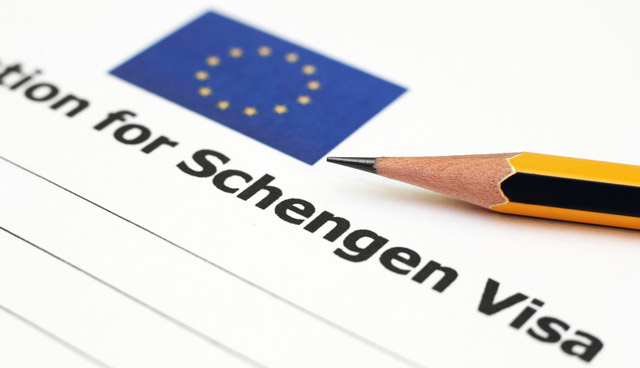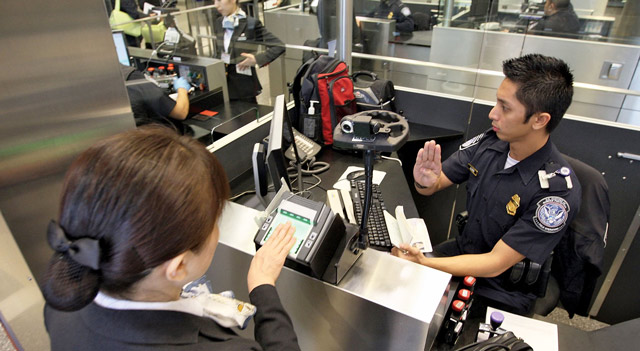Schengen zone: concept, history, participating countries, procedure for entry into Schengen for Russians
The picturesque Schengen village with a population of 500 inhabitants, located in Luxembourg, is known throughout the world. It was here that the Schengen Agreement (SHA) was signed in 1985, abolishing the visa regime. Initially, only 5 states took part in its signing: the Netherlands, Belgium, Luxembourg, Germany and France. The document came into effect only in 1995, when the actual opening of borders took place.
The place for signing the document was not chosen by chance. Firstly, at that time Luxembourg held the presidency of the Council of the European Union. Secondly, Schengen is located in close proximity to the place where the borders of three countries meet: France, Germany and Luxembourg. Now the name of the village is used in a common sense: this word replaces the name of a Schengen visa or denotes the Schengen zone itself.
After the conclusion of the Schengen Agreement, preparatory work began to develop the basic conditions for crossing borders. And in 1990 the Schengen Convention was adopted. This document provided for the complete abolition of border controls and the development of a unified visa system . In 1999, the EU Schengen legislation came into force. The new members of the European Union do not sign the SHS. By joining the EU, they undertake to comply with the Schengen rules, which are part of the legislative norms of the European Union.
Currently, the zone's borders extend over 50,000 km (80% of which are sea areas) and include hundreds of seaports, airports and land checkpoints. Currently, 400 million people live in Schengen, and its area is over 4.3 million km².
Participating countries
As of 2019 Schengen The agreement was signed by 30 states, but only 26 countries actually opened their borders(The year of signing is indicated in brackets). The current map of the Schengen area is shown on the right.
So, the Schengen countries:

- (since 1995).
- (since 1985).
- (2004).
- (since 1985).
- (since 1992).
- (since 1996). Entry to the Faroe Islands and Greenland is permitted only with a visa issued by Denmark.
- Iceland (since 1996). Not part of the EU.
- (since 1991). The entire territory of Spain is included in Schengen, but when leaving Ceuta and Melilla for Spain or other countries, visa control is established.
- (1990).
- (since 2004).
- (since 2004).
- Liechtenstein (since 2008). Does not apply to the EU.
- Luxembourg (since 1985).
- (since 2004).
- (since 1985). Excluded territories: Aruba, Curacao, Sint Maarten, Caribbean Netherlands are subjects of the Kingdom of the Netherlands that require a Dutch visa to visit.
- (1996). Part of Schengen, but outside the EU. The polar archipelago of Spitsbergen is excluded from the Schengen zone; free entry is possible here under the Spitsbergen Treaty.
- (since 2004).
- (since 1992).
- (since 2004).
- (since 2004).
- (since 1996).
- (since 1985). You can enter any region of France with a Schengen visa, except for overseas possessions.
- (since 2004).
- (since 2004). Does not apply to the EU.
- (since 1996).
- (since 2004).
All EU states, with the exception of and, which require separate visas, have agreed to join the Schengen area. And everyone except , did it. The entry of Bulgaria and Romania is hindered by several countries, while entry into Schengen requires the unanimous consent of all participants. The main reason for the refusal is the ineffective fight against corruption and the high crime rate in these countries. The annexation of Cyprus has been postponed indefinitely due to problems in the northern part of the country, which is not controlled by the Cypriot government. Croatia's accession is expected after 2020.
Schengen includes 4 countries that do not belong to the European Union: Iceland, Norway, Liechtenstein and Switzerland. A Schengen visa is valid in non-Schengen countries. Monaco and San Marino also automatically fall into the zone.
Schengen, EU and Eurozone
The EU, Schengen and the eurozone should not be confused, but it would be correct to compare these three entities. The European Union appeared in 1951, 6 years later the European Economic Community (EEC) was created. Finally, in 1992, the EEC was transformed into the European Union, and now it includes 28 states.

Today there are 3 agreements in force that provide varying degrees of cooperation within the EU:
- participation in the European Union;
- participation in the eurozone - when a decision is made to switch to the single EU currency - the euro;
- participation in the Schengen agreement.
Membership in the EU does not necessarily mean participation in Schengen. For example, Switzerland is part of Schengen, but has no relation to the EU. Sweden is a member of the EU and Schengen, but does not belong to the eurozone. Norway is a signatory to the Schengen Agreement, but is not a member of the EU or the Eurozone. Finally, Germany (like most of the remaining European countries) is included in all three associations.
When talking about the European Union, it is difficult not to mention the brewing crisis within this entity. An obvious example is Greece. The austerity measures introduced in this country related to solving the debt problem have led to a wave of discontent among the population. The situation in the country was aggravated by EU sanctions against the Russian Federation and Russian retaliatory measures, from which agricultural producers suffered. Greece is now announcing its intention to leave the eurozone and Schengen. According to a number of analysts, this could be the beginning of the collapse of the EU.
Schengen rules
From the terms of the Schengen Convention it follows that everyone who has received the right to move freely within the zone covered by the rules of this agreement. If you are planning a visit to only one country, then everything is simple here. It is enough to collect documents and send them to the consulate, visa center or travel agency. Even if you later develop a desire to see the sights of a neighboring state, this will not raise any questions. But what to do when your travel plan includes visiting several countries? Where should I take the documents in this case?

1. Rule of first entry into Schengen
The first entry must be through the country that issued the visa. The rule should not be taken literally. For a single-entry visa holder, this means that most of the time he must stay in the country whose visa he received. Travel through other states not exceeding 1-5 days will be considered transit.
2. Home country rule
If you are planning a visit to several countries in the zone, then an application for a visa document is submitted to the consulate of the state where you plan to spend more days. The rule applies more to short-term visa holders. A national visa, in principle, is issued to those foreigners who plan to work or study for a long time, so the country will be their main country in any case.
You should find out which country is the main one before submitting documents. To do this, it is enough to calculate the number of days allotted for visiting each state. This is easy to do if you have booked a hotel. The country with the most overnight stays will become the main one. When it is impossible to calculate the number of days (for example, some countries have the same number of days), then the application is submitted to the representative office of the country through which entry into the zone will be made. Holders of multiple visas must remember that the majority of trips should be in the country that issued the visa.
3. Duration of stay
This rule applies to multivisa holders. Any 180 days must not total more than 90 days spent in Schengen. That is, you can stay in the zone for 3 months, and if you use them immediately, then entry into Europe will be closed for the next 3 months. This moment is very carefully controlled at the border. But for recipients of multiple-entry visas issued for a period of more than a year, such a calculation system is even beneficial. If you correctly determine the timing of entry and exit, then you can spend a total of not 90 days in Schengen, but twice as much. Counting the number of days is a rather complicated process. To make it easier, special calculators are provided on the official web resources of the embassies of various countries.
New rules
On September 14, 2015, the Visa Information System (VIS) was put into operation, which contains data on all persons entering the zone. From now on, the applicant must provide a digital photo and fingerprints to obtain a visa. All data will be stored for 5 years and will be available at the representative office of any participating state. This will make it easier to obtain a multiple entry visa. It is enough to leave your data in the database once and you will need to go through the procedure again only after 5 years.

Also, the VIS database will store information about applications ever filed and all decisions made on them. This will make it easier to track the history of a person’s movement across the Schengen countries.
Entry into the Schengen zone for Russians
Citizens of foreign countries that are not members of the Schus are required to obtain a Schengen visa to enter the zone. There are several types of visas, which are divided by duration of validity, purpose of travel and other characteristics. Russians, in order to travel freely within the zone, will need a visa to Schengen countries type “C”. Depending on the number of visits, there are several types.
Single and double entry visas
Single or double visits to the Schengen area are allowed. Issued for up to 90 days. The number of permitted entries is indicated on the visa itself and usually does not exceed two times. It is with such a visa that the rule of first entry applies, that is, if a traveler plans to visit two or more countries, then the first one should be the one that issued the document.
Multiple entry visa
A multiple visa allows you to enter the zone several times within a given period. Although such a permit is issued for a certain time, it does not limit the number of visits. A multiple visa can cover a period from 30 days to 5 years. That is, the right to multiple entries into the Schengen zone can be obtained by having, for example, a visa for a year or for 5 years. Multiple visas, depending on the purpose of the trip, can be tourist, educational, business, guest or work. A regular tourist visa can be obtained for 30 days, 1 or 2 years. For a maximum period of 5 years, a multiple visa is usually issued to businessmen, diplomatic staff, citizens who have close relatives living in Europe, as well as trustworthy persons who have repeatedly visited the zone.




